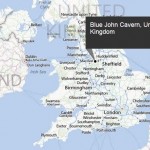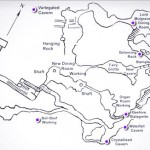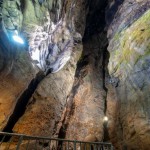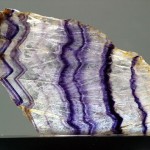Mel Auker is a PhD student in the School of Earth Sciences at the University of Bristol and is a regular contributor to Between a rock and hard place. In her own words, she’s an “applied mathematician bumbling my way through a geology PhD”. Here she provides us all with some Monday afternoon inspiration. Read the Original BBC article or watch the BBC interview with Peter Harrison.
I think a lot of PhD time is spent searching, either literally or metaphorically; everything from inspiration on a Monday morning to melt inclusions on the SEM late on a Friday afternoon. In the grand scheme of things though, these searches are short and you get your PhD wrapped up within three to four years.
Can you imagine, then, hunting for something for 68 years?
Back in 1945, a miner named John Royse reported finding an “amazing deposit” of Blue John stone, the most prized ornamental variety of fluor-spar (calcium fluoride – CaF2). Blue John is only found in the UK at Blue John Cavern and Treak Cliff Cavern at Castleton in Derbyshire, making his discovery of the semi-precious mineral at the latter location really quite exciting. Royse shared his excitement with then-19-year old Peter Harrison, whose family had taken over the running of the mine, but sadly died before he could show Harrison the vein’s precise location. The family have been on the hunt for John Royse’s “lost deposit” ever since, and have spent hours searching the old series of caves in the hope of finding it.
Fast forward nearly seven decades, and the Harrison family’s perseverance has finally paid off: Peter Harrison’s grandson, John Turner, rediscovered the vein earlier this month. After spotting something unusual on the cave floor, and digging through muddy deposits for an hour, Turner came across a piece of old, rotten carpet. He moved the carpet and the supporting wooden laths beneath it aside, and uncovered the amazing deposit. The family have estimated that the deposit is large enough to provide mining opportunities for at least the next ten years. One piece already removed is said to be worth in the region of £12,000 to £15,000 once it’s been processed.
Next time it seems that the road ahead is just too long, think of the Harrison family and their rediscovery of the beautiful Blue John stone deposit: perseverance really does pay off!
- Map showing location of the Blue John Cavern (Bing Maps)
- Map of the tour area of the Blue John Cavern (http://www.bluejohn-cavern.co.uk/)
- Inside the Blue John Cavern (http://www.bluejohn-cavern.co.uk/)
- Blue John specimen, extracted c. 2008





Matt Herod
Wow! That is a really cool story. Thanks for sharing it.